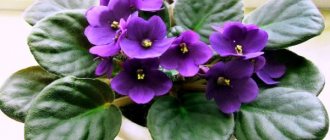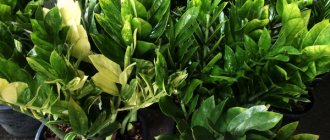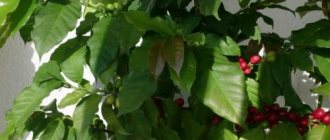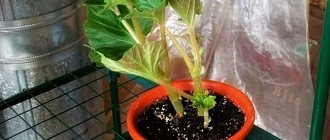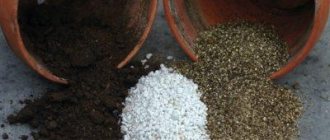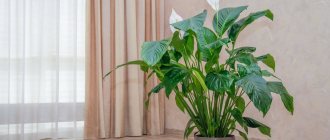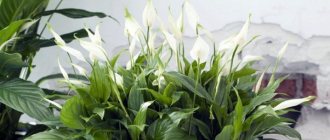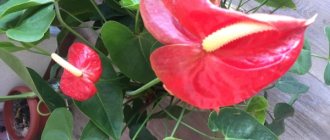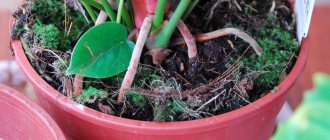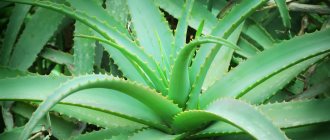Soil is the basis for successful cultivation and should be selected depending on the basic needs of the plant. Buying suitable soil for aroids in a store is quite difficult. The range is not too wide. Some mixtures simply do not meet basic standards, while others are impossible to obtain because stores do not stock them. Making suitable soil for aroid plants at home is very simple, but you need to know which components need to be mixed and in what proportions.
Who is the causative agent of the disease
The disease is caused by a ubiquitous fungus. The causative agent monilinia fructigena is ubiquitous. Apple trees growing in temperate and warm climates are equally affected by it. The fungus monilinia fructigena damages apples, pears and stone fruits. The pathogen monilinia mali is highly specialized. It infects only one type of plant; only apple and pear trees are affected. This type of infection is common in the southern regions and gardens of the Far East. The life cycle of the fungus monilinia fructigena consists of 2 stages, and that of monilinia mali - of 3.
Soil for spathiphyllum: composition
Guide to growing garden strawberries: planting in open ground and caring for a good harvest
The soil for spathiphyllum should be nutritious and loose. The flower removes many useful substances from the ground; adding them with each watering or simply increasing the intensity of fertilizing is not always convenient - this complicates care. For replanting, it is better to immediately use fertile components when preparing the substrate with your own hands, or enrich purchased soil with them.
Loosening elements
They have low nutritional value, but significantly improve aeration, some increase moisture capacity, others - water permeability. Some components shift the acidity of the earth in one direction or another. Increase:
- acidic peat – strong;
- pine litter – average;
- bark, sphagnum - unimportant.
Shift to a neutral reaction by diluting the soil:
- perlite;
- expanded clay;
- Red brick;
- coconut fiber;
- sand.
Pine bark
It improves the conductivity of water and air, contains a tiny amount of nutrients, and has a slightly higher acidity. It is better to choose bark with a fraction of 1-3 cm in the store - they sell it already disinfected.
Perlite
This material is free-flowing, lightweight, chemically inert, and is not contaminated by pathogens. It is an inflated volcanic rock. Used in almost all soils for indoor flowers.
Sphagnum
Peat moss with high moisture holding capacity and antiseptic properties makes the soil loose. It is not suitable as a soil base for planting spathiphyllum, but as one of the components it is very useful.
Expanded clay
It is produced by firing clay and comes in different fractions. Large ones are used as drainage, small ones are used to prepare flower soil. Lightweight porous material that absorbs or releases moisture as needed.
Coarse sand
Chemically inert material, increases the conductivity and looseness of the soil, does not allow moisture to stagnate in the pot. In indoor floriculture, fractions from 2 to 5 mm are used. Smaller ones stick the soil together and make maintenance more difficult.
High peat
It has an acidic reaction with a pH of 2.5-3.6 and a fibrous structure. It is in the initial stage of decomposition, moisture-intensive, and contains almost no nutrients.
Coniferous land
Thanks to the air structure and the inclusion of needles that have begun to decompose, it significantly increases the permeability of the soil. It is rarely sold in stores; it will take 3-5 years to prepare it yourself; if it is dug up in a pine forest, it needs to be disinfected. pH level 4.5-5.5
Coconut fiber
Pure organic material, chemically neutral, composed of approximately 30% short fibers and 70% coconut palm nut dust. Decomposes extremely slowly and is not prone to caking or settling. It retains its loose structure in any conditions. Increases volume 8-10 times when soaked.
Coco soil is a mixture of peat and coconut fiber. Both materials can be used as a base for flower soil.
Nutritional Components
The prepared soil usually contains enough fertilizer to replant the spathiphyllum and not need to fertilize it for 1-2 months. Those who like to make mixtures on their own should take care of the nutrition of the plant.
garden soil
It has high fertility, but can be quite dense. The soil is taken only from clean fallow where no herbicide treatment was carried out in the previous season. It must be clean, free of earthworms, insects, and weed roots.
Humus (rotted manure)
Waste from cattle or horses. Increases the nutritional value of the soil and promotes the growth of green mass. Completely rotted litter or rolled humus that has matured for several years is used, the acidity is about 8. It is disinfected before use.
Sod land
It is harvested from meadows and pastures overgrown with cereals or legumes. It has low fertility, passes well, but does not retain water.
Leaf ground
It is rotted litter with an airy structure, slightly acidic reaction and high nutritional value. Harvested under maple, fruit trees, hazel or linden. It is impossible to take soil under crops whose leaves contain tannins.
Stages of spathiphyllum transplantation
- Land preparation. It is correct to buy soil for transplanting spathiphyllum at home in a specialized store. So the composition and concentration of nutrients will correspond to the requirements of the plant. If it is not possible to buy ready-made soil for spathiphyllum, then you can prepare it yourself. You need to replant in slightly acidic soil. It is made up of turf soil, leaf soil, peat, and coarse river sand. It is also recommended to add additives to the soil in the form of charcoal, brick chips, and superphosphate.
- 20 aroid indoor plants with photos, names, varieties
Preparing a pot or flowerpot. The choice of container for transplanting spathiphyllum at home depends on the size of the old pot. If you plan to leave the plant intact without planting the children, then you should take a pot two to three sizes larger than the previous one. When planting, you will need additional containers for new plants. When choosing what material the new container will be made of, you should give preference to natural clay. A drainage layer of expanded clay (2 cm) must be placed on the bottom of the new pot.
- Preparing the plant for transplantation. On the day of the planned transplant at home, the pot with spathiphyllum is well watered so that the soil becomes moist. This will make it easier to remove the plant from the pot and, if necessary, divide the rhizomes. Use a garden spatula to walk along the edge of the old pot, digging up the roots. The plant, along with the earthen lump, is pulled out of the container. The roots of an adult plant tightly entwine the entire soil. It is at this stage that spathiphyllum blooms. The root system must be gently cleaned of drainage and old soil. If the plant has flower stalks, then it is worth cutting them off with pruning shears so that it can use all its strength to take root in the new pot. Dried and wilted leaves are carefully removed or, if yielding, torn off.
- Rhizome division. Several rosettes can be separated from the entire mass of plants. This is the easiest way to propagate spathiphyllum at home. If it has not been replanted for a long time, then there may be a lot of young plants in the pot. When separating the children, the main task is to preserve the powerful rhizome behind each rosette of leaves. After dividing, you should inspect the roots. Rotten and too long ones are cut off.
- Planting spathiphyllum. To transplant spathiphyllum according to the rules at home, you need to follow simple tips. You need to replant carefully. Prepared soil is poured onto the expanded clay laid at the bottom of the pot or cache-pot up to half the volume. Spathiphyllum is placed in the middle of the pot and the root system is distributed over the surface. Next, add the substrate to the desired level. The plant should not be deepened into the soil, even if the root buds do not reach it. After some time, they will reach the ground and strengthen the flower even better. When the soil is poured, it should be compacted a little so that the plant does not sway and sits tightly in the ground. Then the spathiphyllum plantings are watered abundantly to eliminate voids in the soil. If at the end of watering a depression is formed, then it is necessary to add more soil and repeat the procedure of compacting and watering. After all manipulations, the leaves are sprayed to wash away dust and dirt.
- Caring for a transplanted plant. In the first month in a new pot, spathiphyllum is very demanding on humidity. Many gardeners even recommend setting up a mini-greenhouse for it. This is quite easy to do. You can place the plant along with the pots in a plastic bag and the greenhouse is ready. Spathiphyllum leaves need frequent spraying from a spray bottle. Spraying is best done early in the morning and at dusk and preferably twice a day. The soil should not be allowed to dry out, so it should be watered as soon as the top layer of soil dries out a little. To speed up root formation, the plant can be watered once with “Kornevin” or another preparation that stimulates root formation. You can also use root or foliar feeding with special fertilizers. It should be remembered that the plant will not bloom until the root system completely entwines the pot from the inside.
Proper transplantation of spathiphyllum and care at home after it will help the plant to recover and grow its root system in a short time. A healthy plant will delight with lush flowering and beautiful succulent foliage.
Proper drainage
Holes are made in the container for transplanting spathiphyllum. Drainage, like soil, can be purchased ready-made or made independently. The first method involves purchasing expanded clay packaged in bags, having an oval or round shape. Its cost is quite high. And if you plan to replant more than one specimen, then it is much more profitable to prepare the drainage yourself. You can use pebbles or any hard rock. Most often they take granite crushed stone or brick. The starting material is washed well and then scalded with boiling water or boiled for five to seven minutes. This precaution allows for disinfection, protecting the plant from various pathogenic bacteria.
Disinfecting the land before planting or transplanting spathiphyllum
Soil acidity
When compiling their own soil mixture, gardeners often resort to using garden or forest soil, which contains a huge number of pathogenic microorganisms, bacteria and insect pests. And sometimes you can open a package of ready-made primer and discover that it also needs disinfection.
In the fight against the destruction of harmful bacteria and fungal diseases, the drugs Fitosporin, Gamair and Alarin have proven themselves to be excellent. Their use will make the composition comfortable for “female happiness.”
Thermal treatment of the soil is also carried out. There are two main methods - baking in the oven and freezing.
In the first case, the soil is poured onto a baking sheet, the layer is leveled and placed in the oven, where it is kept for 15-20 minutes at a temperature of 120 degrees. To freeze the substrate, leave it on the balcony for several days in winter. The latter method is considered less effective, since some insects and fungal spores are able to overwinter in the soil.
Soil selection
Before planting a crop, you should choose the right soil for it. To do this, you can buy a ready-made composition or make it yourself.
Requirements
Spathiphyllum loves nutritious soil, which will ensure its full development.
Nutritious
It is important that the soil contains sufficient nutrients. This will ensure normal development of the plant
Loose
The culture needs loose soil, which provides air access to the root system of the plant.
Homemade or from the store
Ready soil is sold in garden stores
It is important that it is intended specifically for spathiphyllum. It is also permissible to use primer for Aroids. If you can’t find it, you should use a substrate for flowering plants
Ready-made mixtures have an almost ideal composition. However, it is considered not loose enough. To eliminate this deficiency, special substances are introduced into the soil - crumbs, sand, vermiculite
If you cannot find it, you should use a substrate for flowering plants. Ready-made mixtures have an almost ideal composition. However, it is considered not loose enough. To eliminate this deficiency, special substances are introduced into the soil - crumbs, sand, vermiculite.
How to properly prepare a suitable substrate
To plant a shoot or replant an adult plant, you will need nutritious soil. There are several options for preparing it.
Second
It is also possible to obtain a nutritional composition by mixing deciduous and turf soil, peat and sand in a ratio of 1:1:2.
Third
It is recommended to prepare the soil by mixing humus, peat, sand, crushed bark and leaf humus.
What nuances should be taken into account
It is enough to add only loosening components to the finished substrate. The soil that you make yourself is not heavy. However, it is worth considering certain features. For the normal development of spathiphyllum, all necessary additives should be added to the soil.
Good drainage is important
What should be the correct drainage?
It is worth making holes in the plant pot. In this case, you should buy drainage in a store or make it yourself. The store sells oval or round expanded clay, packaged in bags. To independently prepare a drainage layer, use brick, pebbles, and stones. They should be washed and doused with boiling water.
Ready mixes
Today you can buy many ready-made mixtures for Aroids. They are sold in specialized garden stores.
Vermion
This soil is intended for spathiphyllum. It contains a lot of organic matter and nitrogen. The product also contains potassium and phosphorus.
Biomaster
The composition is intended for Aroid plants. The composition contains only natural ingredients. The soil is characterized by an optimal ratio of nutrients.
Agrosver
The product is intended for spathiphyllum. It does not require additional sterilization. The substrate is completely ready for use.
Improvement of purchased land
Ready-made mixtures are considered quite heavy. To make them lighter, it is worth adding perlite, vermiculite, coarse sand or crushed brick to the composition. This increases the breathability of the soil.
If the soil is chosen incorrectly, the plant begins to turn yellow, the leaves dry out, and the roots suffer. There is also a risk of delayed flowering. When flowers appear, they are small in size and dim in color.
General recommendations
If the soil mixture is purchased ready-made, then only baking powder is added. In order for the soil, prepared independently, to be fertile and of high quality, and for the spathiphyllum to delight you with lush greenery, you must follow two simple recommendations:
- add additives to the mixture you prepare yourself;
- ensure good drainage.
The air permeability of the soil is of paramount importance for spathiphyllum. It can be provided by tree bark or coconut fiber. Superphosphate adds nutrition to the soil. It does not need to be added in large quantities. It is enough to add just a little fertilizer. Drainage is an integral part of the soil. It must be placed at the bottom of the pot into which the spathiphyllum is transplanted. Without it, the flower will simply die. The presence of a drainage layer is paramount for both ready-made and “homemade” soil.
How to choose a ready-made substrate
It is best to purchase a ready-made substrate at a gardening store rather than rack your brains over the question of what soil is needed for spathiphyllum and how to make it yourself.
Nowadays, it is not so difficult to find special soil for the flower of female happiness in stores. One of the suitable options is Vermion soil mixture. If you cannot find soil for spathiphyllum, a soil mixture for tropical plants or aroid crops is suitable. If you don’t find such soil mixtures, you can buy a universal soil, but you will have to carefully study the composition before purchasing and add additional ingredients.
It is better to choose a substrate whose packaging says that it is for spathiphyllum
What kind of soil is needed for spathiphyllum:
- Universal primer for the aroid family Seliger-Agro. The acidity level of this substrate is within 5-6. The composition includes river sand, peat, expanded clay, large-pored baking powder and a complex of mineral fertilizers specially selected for this group of plants.
- Another good substrate is BioMaster. The composition includes moss, biosoil, sand and charcoal.
- The substrate from Eco Sad is also suitable for planting the flower of female happiness. It consists of sand, moss, turf soil, peat, vermicompost, charcoal, agroperlite. All ingredients are laid in layers. You can mix them at your discretion.
Important! Universal soil mixtures usually have a high level of acidity and are too heavy for aroid crops. But purchased soil mixtures are not always suitable for plants. After transplantation, the first time you need to monitor the flower
And if it looks bad, you need to change the soil
After transplantation, the first time you need to monitor the flower. And if it looks bad, you need to change the soil
But purchased soil mixtures are not always suitable for plants. After transplantation, the first time you need to monitor the flower. And if it looks bad, you need to change the soil.
What can be added to purchased soil to improve it?
If you can’t find a soil with a suitable composition, you will have to buy a universal soil mixture and add other ingredients to it to improve it.
Before planting, sand, wood ash, coconut shavings, crushed tree bark or perlite are added to the universal soil for spathiphyllum.
Types of store-bought mixtures
Today, ready-made soil mixtures for Aroids are not a rare commodity. You can purchase it in specialized garden stores and flower shops. These products have approximately the same composition, but different manufacturers and, accordingly, prices.
- "Vermion" soil for spathiphyllum. The composition contains large quantities of organic components, nitrogen, as well as balanced levels of potassium and phosphorus. Suitable for all representatives of the Araceae family. The volume of soil in the bag is 2.5 liters, the price is 40 rubles.
- “Biomaster” for aroid plant species is a soil mixture made exclusively from natural, natural ingredients. Manufacturer – Russia. It is characterized by an optimal ratio of minerals for the full development of spathiphyllum. The composition includes sphagnum moss, which protects the roots of the plant from rotting. Volume 2 l, cost 54 rubles.
- "Agrosver" soil for spathiphyllum. The product is completely ready for use and does not require additional sterilization. The amount of soil mixture is designed for a pot with a capacity of up to 2 liters. The cost is about 30 rubles.
Fertilizing only not in winter
Even if the plant is as stably decorative as Monstera, or there is an almost imperceptible period of complete dormancy in its development, as in some Dieffenbachias, it is not worth feeding araceae all year round. You can only feed actively growing plants that are producing new leaves and shoots. And only from the beginning of spring to mid-autumn.
In winter, even if kept in flower displays, fertilizing should be excluded from the care of these amazing plants.
Even if the plant is as consistently ornamental as Monstera, it is not worth feeding aroids all year round.
Scientific experiments
Laboratory experiments on animals were carried out, which successfully confirmed the data known to the people for centuries. The animals were injected subcutaneously with an infusion of prolomnik. The contraceptive effect was observed for 6 months, after which completely healthy offspring were obtained. Those. The use of the herb did not cause any harm to future children. It seems that it is no coincidence that the plant aroused the interest of scientists. Research has confirmed a number of data from traditional medicine. It is now known that this special and beneficial plant contains saponins, which have important properties. Ingestion causes miscarriage, so it is contraindicated in pregnant women. At the same time, it is successfully used as a contraceptive. The interest of scientists in P. northern arose quite recently, when its study confirmed some data from traditional medicine.
Diseases and pests
Aphids, whiteflies and spider mites are the three main enemies of all indoor aroids, regardless of their type. And you need to fight them only by combining two methods:
- correction of care, restoration of the optimal living environment;
- use of insecticides or biological products.
But with aroids, you need to monitor not only the aerial parts: not only tuberous, but also any types of aroids are extremely vulnerable to nematodes. Even Dieffenbachia or Monstera cannot boast of the ability to remain decorative when the soil is contaminated, let alone Alocasia, which can die in a couple of weeks.
You need to carefully and constantly monitor the soil, its condition and quality. The best prevention is disinfection of the substrate before planting.
And do not forget about mosaic viruses, common to all aroids: the affected plants must be destroyed, the fight is useless.
Plants are resistant to insect damage. Among the most dangerous is the mealybug, which is attached to the bottom of the leaf blade. The drug Actellik is used to control the pest.
To destroy scale insects, which rarely infect aroids, you can use the drug Fitoverm.
We invite you to familiarize yourself with the Budenovka tomato variety: description and photo
Often, plants can become infected with fungi or viruses that enter with the substrate. In this case, it is recommended to transplant the flower into new soil, which has previously been disinfected. After removing the plant from the old soil, its root system must be thoroughly cleaned of soil and disinfected in a weak solution of potassium permanganate.
Shade tolerance of aroids is relative
Aroids are often advertised as almost shade-loving plants. And even though some species can indeed take root in moderate lighting, they should never be placed in the shade. The ability to tolerate the lowest light, even in species such as philodendrons and monsteras, should not be confused with a love of shade.
In rooms without a constant source of light, in dark corners, in the depths of the interior with non-southern windows, not a single plant from this family will grow. Aroids allow you to vary freely within the light and semi-shaded areas of the premises, moving away from the window sills and decorating the rooms with green accents; they do not like direct sun.
In fact, aroids will adapt and change their growth rate, but will remain decorative within the confines of comfortable, bright rooms anywhere. But you should never experiment with placement in the shade.
All aroids will prefer to move closer to the window for the winter or enjoy additional lighting.
The second stage is soil preparation
The substrate for anthuriums should be very loose, breathable and always contain large pieces of pine bark. Many gardeners prepare the soil for planting themselves. You can use “universal soil.” It is quite loose and already contains a complex of micro and macroelements necessary for plants at the time of planting or transplanting.
and some Sphagnum moss. In case you suddenly forgot to water your flower, sphagnum will help it and retain moisture.
To make it loose, add a little river sand to the finished substrate, Perlite and Vermiculite, and mix it all thoroughly.
It’s quite easy to check whether you have a loose mixture; when watering, the water should quickly penetrate down. You cannot add chalk, lime and wood ash to the nutrient soil for anthuriums. Plants do not like this and begin to wither. For very busy gardeners, there is an easy way to buy a ready-made substrate. Especially for aroids, and anthurium belongs specifically to this species, the substrate component “Gardens of Aurica” “Aroids” is suitable.
It consists of turf soil, sand, pine bark and needles, sphagnum and vermicompost. In addition, you can purchase soil for “Azaleas” and “Heathers”; its composition is most suitable for planting anthuriums. We can recommend a mixture of ready-made soils “Azalea”, “Begonia”, “Señoria” in equal parts with the addition of a small amount of pine bark.
Let's start the transplant
We take “Flower, expanded clay drainage”. This is a natural material necessary for growing indoor flowers. It promotes optimal moisture distribution and maintaining a comfortable water-air regime. Ensures the circulation of nutrients, prevents water stagnation, and thereby promotes the harmonious development of the root system.
You can also use gravel or pieces of a broken pottery pot. The size of the drainage should be approximately twice as large as the diameter of the holes in the pot. We place a drainage layer of 1-5 cm at the bottom of the pot, depending on the size of the container, and pour the prepared substrate on top.
In the case of transplanting a young plant, it is quite easy to pull it out. But if you are replanting an already mature plant, then the roots may crawl out of the holes in the pot, then you need to be careful. It is recommended to trim the protruding roots, since it is unlikely to be possible to pull them out without damaging them, but if you overdo it, you can damage the entire root. Perform pruning with a knife or scissors, after moistening the tool in an alcohol solution.
When dividing a bush, a problem may arise in that the roots of the plants are strongly intertwined and it is impossible to separate them without damaging them. In this case, the roots of the plant can be soaked in warm water. After some time, the excess soil will leave the roots, and the remaining soil can be easily removed by yourself. The roots of the anthurium will be exposed, and you can easily untangle them.
If the anthurium roots are clean and there are no signs of rotting, then no additional processing is required. If the tips of the root turn black, and this is the process of decay. The reasons for which may be different: improper care, overwatering, and possibly exposure to pests. It is necessary to cut off the rotten areas of the roots with a sterile instrument and soak the roots for a short time in the “Fitosparin” solution. It is intended for the treatment and prevention of root rot and promotes root growth. Then, carefully place the anthurium in the pot, distribute the roots on the surface of the soil and sprinkle with earth. If the soil is moist enough, watering may not be necessary.
If there are flowers on the anthurium, it is better to remove them so that the plant does not waste nutrients on them. Of course, if you are not tasked with obtaining seeds. Organic and mineral fertilizers should be added to the soil no earlier than two weeks after transplanting. The transfer is complete. Now we place the pot in a bright place, but avoid direct sunlight and drafts.
All aroids love complex fertilizers
There is no point in experimenting with fertilizers for aroids. They love complex mineral fertilizers containing macro- and microelements. Special fertilizers for aroids are better suited, but high-quality universal preparations will also fully satisfy the requirements of these plants.
And if you dissolve fertilizers in slightly acidified or controlled soft water slightly warmer than room temperature, then microelements will be absorbed more efficiently. It is better to reduce the dosages recommended by the manufacturer, preferring weak frequent feedings to rare and intense ones.
How to choose a purchased mixture?
Ready-made mixtures are sold in flower shops, gardening departments, and on the market. There is a special soil for spathiphyllum. But it is also suitable for araceae, the family of which the flower belongs to.
However, it is worth considering that the mixture is not suitable for anthurium. It is also of the aroid family, but prefers low-lying peat. And all other related flowers love the mount. Such peat becomes compacted over time, which is detrimental to the root system of spathiphyllum.
Ready-made soils from different manufacturers vary in price and composition:
- There are completely natural soils, using natural components, for example, Russian-made “Biomaster” for aroids. Price per package of 2 kg from 50 rubles. It contains sphagnum moss.
- From cheap mixtures "Agrosver" for spathiphyllum. It is completely ready for planting and transplanting. The components are sterilized. For a package of 2 kg from 30 rubles.
- More expensive "Vermion" for aroids. It contains a lot of nitrogen, organic matter, potassium and phosphorus. Price per package of 2.5 kg from 40 rubles.
When choosing soil you need to focus on:
- to customer reviews;
- description of the composition (a bona fide manufacturer indicates all the components of the soil);
- what plants is it intended for?
- tips for use.
Indoor aroids - plants from the tropics
Despite the diversity in nature, only subtropical and tropical aroids have moved into the rooms, but it is better to perceive them as purely tropical. The minimum temperature values for them should be limited to +15...+16 degrees, with optimal values in summer not lower than +17...+18 degrees even at night.
Any strong temperature changes towards cooling cause serious problems with the condition of the plant’s root system and the rapid spread of rot. But aroids are not afraid of heat if properly cared for.
What problems does an incorrectly selected substrate cause?
Coming from South American forests, spathiphyllum is an unpretentious indoor plant. However, like many other flowers, it has its own nuances in growing. Both excessive watering and drought are contraindicated for it. If the plant is not planted in soil with moderate humidity, various pests may appear on the leaves, yellow and dark spots will appear. A lump of earth that does not have sufficient looseness will not allow the roots to breathe. Even proper watering will not avoid problems. Therefore, the choice of soil must be approached with all responsibility. When the leaves become stained or become a “residence” for pests, the problem lies precisely in the incorrectly selected substrate. To prevent this from happening, you need to immediately take the right soil.
Watering is different, but love for air humidity and soft water is not
Some plants from this family require careful watering and light, constant soil moisture, such as anthuriums. Others love high humidity of the substrate and will only tolerate drying of the top layer, like spathiphyllums and dieffenbachias.
But all aroids require careful selection of high-quality water, the temperature of which corresponds to room temperature, with soft characteristics and a pH value from 5.0 to 6.0 or slightly acidified for correction.
And one more point of care always remains the same: air humidity should not fall below 50%. Humidifiers and sprays are also suitable, but Aroids cannot be kept in dry air.
How to make your own substrate?
If you want to prepare the soil yourself, you need to stock up on ingredients. This is especially convenient for those who have their own plot. Beginning flower growers will also cope with the task. The main thing is to disinfect all components. Warm it up, treat it with an ultraviolet lamp, and pour boiling water over it.
What components do you need to take:
- compost or humus 1 part;
- turf soil from the garden, 2 parts;
- sand 1 part;
- peat 1 part;
- charcoal 0.5 parts;
- brick chips or pebbles 0.5 parts;
- sphagnum 0.25 parts.
Step-by-step instructions for preparing the mixture:
- Prepare a pot with holes in the bottom. The diameter depends on the size of the plant. Select in such a way that the roots fit freely. And from them there was another 2-3 cm to the walls of the pot.
- Place pebbles or other drainage on the bottom. Layer about 2 cm.
- Mix the remaining ingredients and set aside in another bowl.
- First place the plant in the pot, on the bottom layer. Then take soil from another container and fill the free space.
- The topmost layer will again be drainage.
